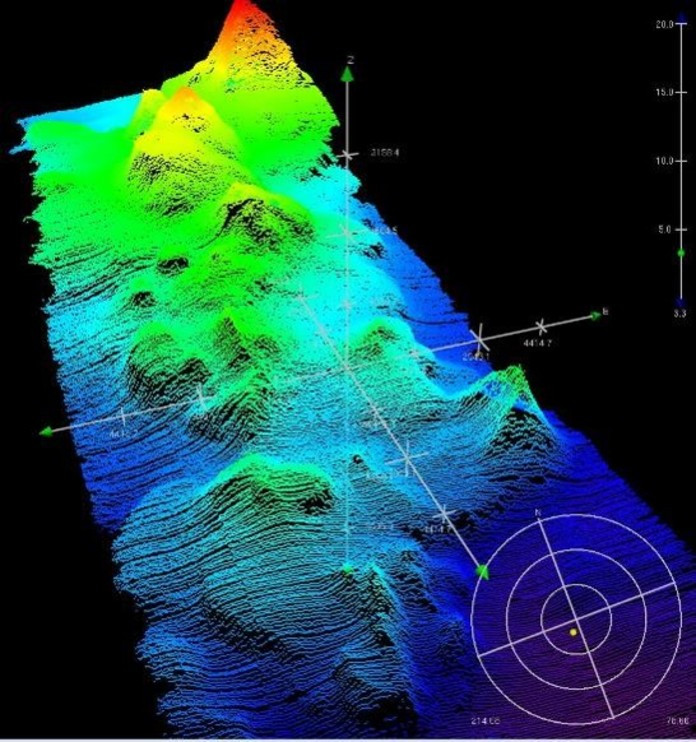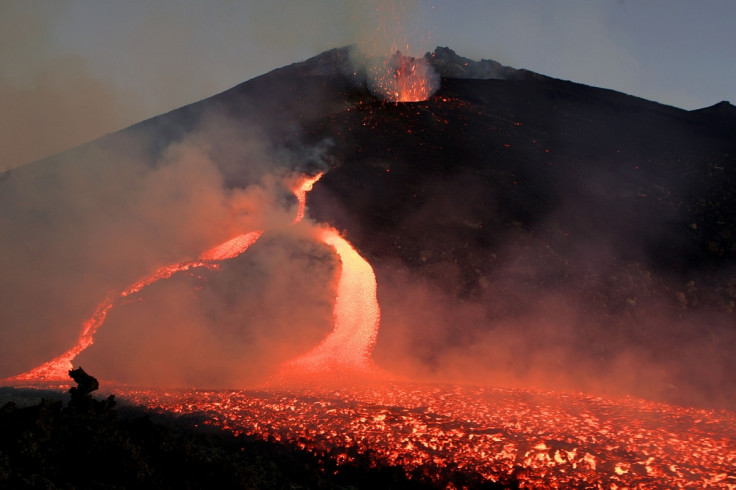Tamu Massif: World's biggest volcano is a giant hybrid blob 10 times the size of Mount Etna

In 2013, scientists announced the discovery of the world's biggest volcano – Tamu Massif. This vast underwater volcano covers an area around 120,000 square miles, roughly the same size as the British Isles or the state of New Mexico. Now, researchers are beginning to learn more about the volcano, with an international team saying the volcano is essentially a mix of two different processes that make one massive blob.
The team spent five weeks on a research vessel run by the Schmidt Ocean Institute in California learning more about Tamu Massif: "This volcano is a beast," Jörg Geldmacher, a marine geophysicist at the GEOMAR Helmholtz Center for Ocean Research Kiel in Germany, told Scientific American.

A report on the volcano in the magazine said the magnetic data suggests the volcano is a bunch of long chains of volcanoes mixed with one massive eruption. "We're looking at something that's in between a mid-ocean ridge and a simple conical volcano," says William Sager, a marine geophysicist at the University of Houston.
Located around 1,000 miles east of Japan and 6,500 feet below the surface of the ocean, the volcano formed around 145 million years ago when lava started pouring out of the sea floor at a point where three mid-ocean ridges came together. Lava flowed from each ridge, preserving a record of the planet's magnetism at this time.

Earth's magnetic field reverses back and forth over time so the lava revealed alternating magnetic polarity. The team took around 1.7 million magnetic measurements to find the volcano has coherent magnetic stripes on either side of it, showing how it formed at the mid-ocean ridge junction.
However, they said the main mountain, which is around 2.5 miles high, is like a big magnetic blob, suggesting something else was involved in its formation. One possibility, the team says, is a large eruption. They now want to find out how much lava came from each source: "How do you get a separate volcanic plumbing system at the same spot?" marine geophysicist William Sager said.
Finding answers to these questions will help scientists understand how this goliath volcano came to be as well as the phenomena behind most of Earth's crust beneath the oceans. Speaking when the volcano was first discovered, Sager said Tamu Massif became inactive a few million years after it formed.
"It's very possible it can give us some clues about how massive volcanoes can form," he said. "An immense amount of magma came from the centre, and this magma had to have come from the Earth's mantle. So this is important information for geologists trying to understand how the Earth's interior works."
A statement from the Schmidt Ocean Institute said much is to be learned about Tamu Massif: "The secrets revealed will be ongoing but worth the wait as we begin to understand how such a massive volcano can form the way it did and what it means to us in respect to the formation of the planet we call home."
© Copyright IBTimes 2025. All rights reserved.






















